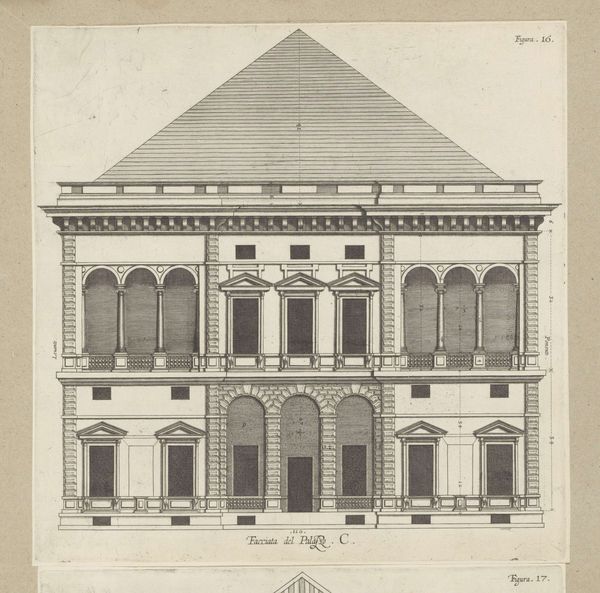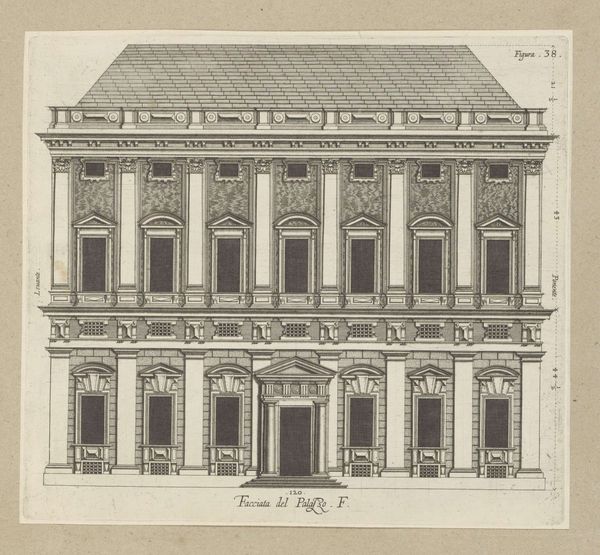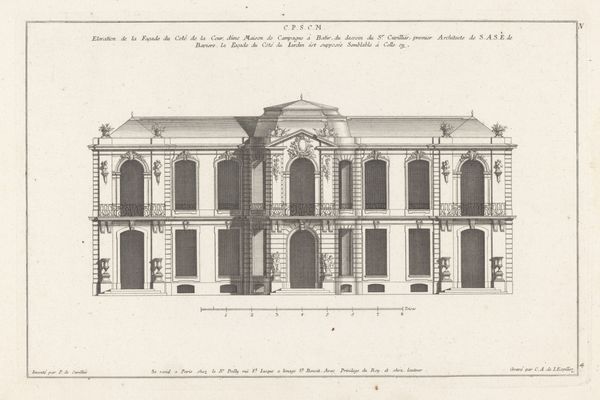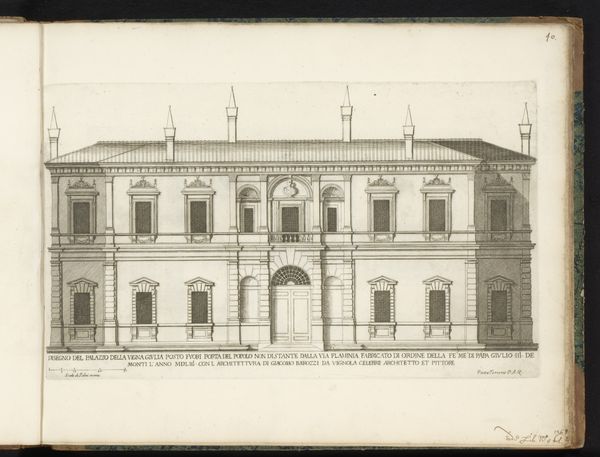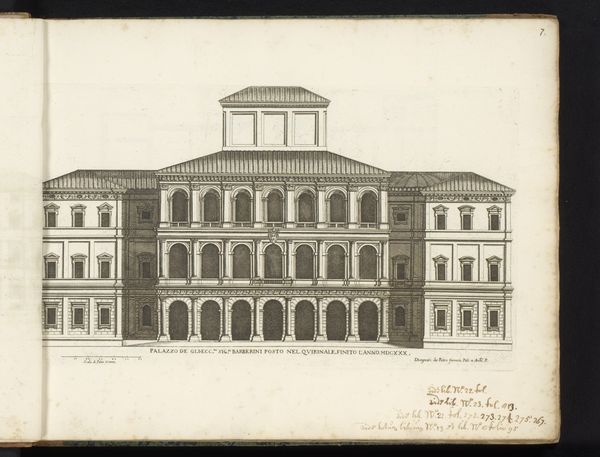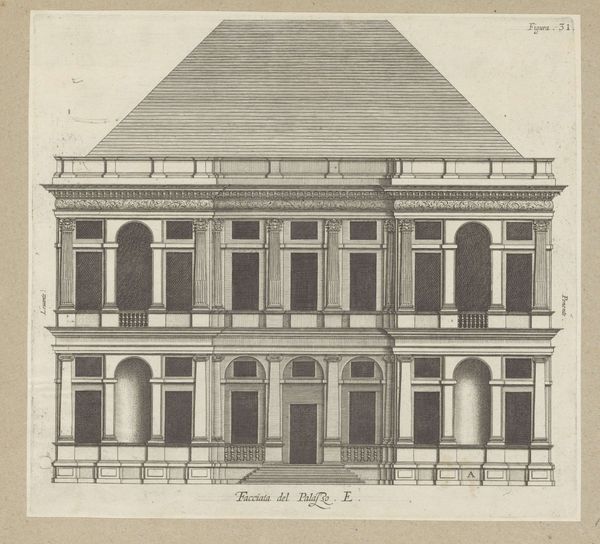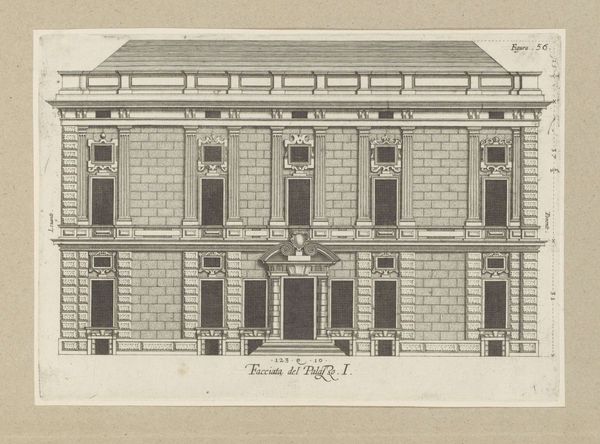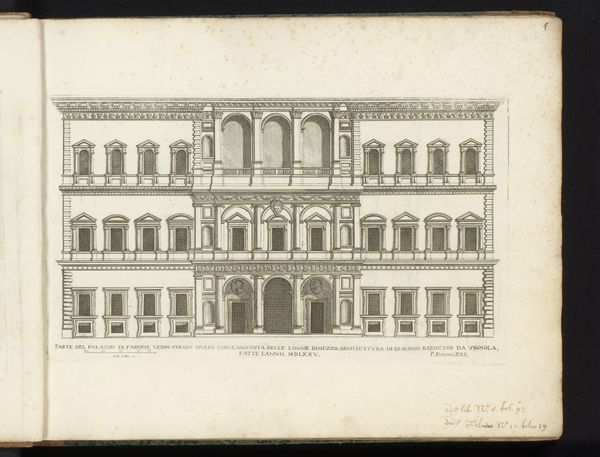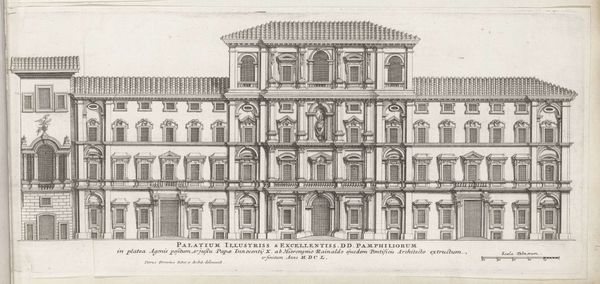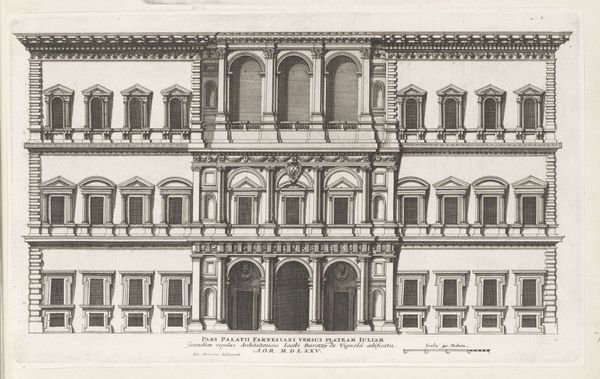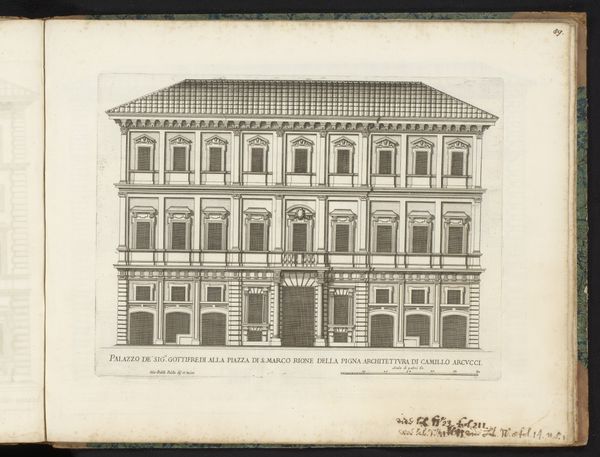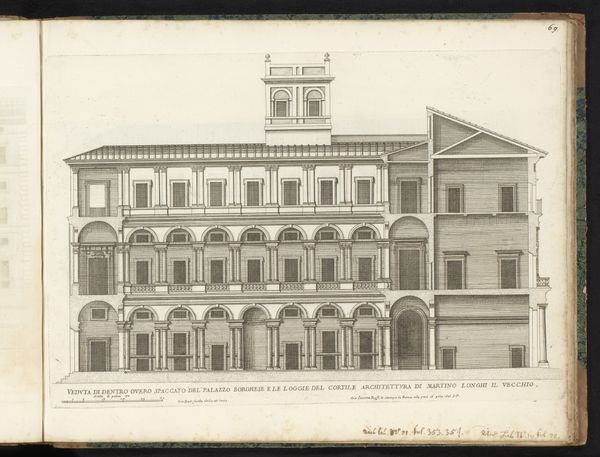
Opstand van de façade aan de binnenplaats van de Villa Grimaldi-Sauli te Genua 1622
0:00
0:00
print, etching, engraving, architecture
# print
#
etching
#
landscape
#
italian-renaissance
#
engraving
#
architecture
Dimensions: height 215 mm, width 297 mm, height 583 mm, width 435 mm
Copyright: Rijks Museum: Open Domain
Curator: Looking at this etching, the first thing that strikes me is its almost theatrical nature. There’s a rigidity to the lines, a formality. It feels staged. What do you think? Editor: Precisely! The Italian Renaissance always aimed for imposing beauty and dramatic proportions in both art and life, I’d say. This precise print by Nicolaes Ryckmans is titled "Opstand van de façade aan de binnenplaats van de Villa Grimaldi-Sauli te Genua", or translated: Elevation of the facade on the courtyard of the Villa Grimaldi-Sauli in Genoa, dating back to 1622. He created this image with engraving and etching, portraying the Villa Grimaldi-Sauli. To me, every carefully etched line exudes a very particular intent. Curator: Yes, a meticulous control. Look at the repetitive archways, the stoic pillars—all conveying stability and power. Ryckmans’ careful rendering really emphasizes that. Each window, arch, and decorative element meticulously drawn, yet strangely without human life. I mean, it’s clearly not just documentation, but a powerful statement, or is it? Editor: In those times architectural drawings gained prominence because Renaissance patrons viewed art as propaganda: portraying ideal values in both form and function was just as important as the aesthetics. Think about what it was meant to signify: balance, order, a civilized and reasoned worldview – which of course served to legitimize those in power. Those intimidating, imposing qualities were there by design! Curator: So, Ryckmans doesn’t simply reproduce a building; he reproduces the *idea* of the building? Or the family’s idea of *themselves*. A constructed self-image, perhaps? What’s particularly fascinating to me is this duality. The elevation feels accessible in its presentation, yet distant, almost sterile. A potent visual symbol, then? Editor: It truly is a dialogue, isn't it? One between accessibility and exclusivity. After spending a few moments absorbing the carefully constructed etching, I find it prompts reflections not only on what architecture shows us but also how the art captures those deeper emotional resonances through those Renaissance aesthetics. I have to admit, it really takes me back to that particular historical mindset... Curator: It seems Ryckmans offers not just an image but rather encapsulates the Italian Renaissance drive toward order and grandeur itself. Fascinating!
Comments
No comments
Be the first to comment and join the conversation on the ultimate creative platform.
